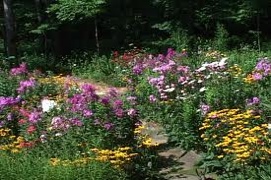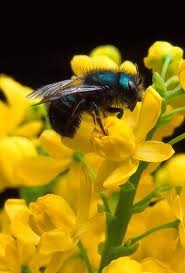Whitewater has many well-manicured lawns, and on a few of them, some honey bee hives. The lawns are lovely, and the honey bees (despite depleted aggregate numbers from colony collapse disorder) are good pollinators.
But what if there’s something different, perhaps even better, than conventional lawns and common honey bees? There is something different — and perhaps even better — if one would only go native.
In place of a regular lawn, however carefully kept, one could grow a natural lawn. Whitewater’s municipal code includes provisions allowing natural lawns at less than 50% of one’s property not covered by buildings, or more than that subject to review and aproval. (There are also provisions for what sort of plants one may have within a garden of whatever size.)

Best bets: Review the ordinance fully, take note of the prohibited plants list, and keep the garden under 50% of your unoccupied property, thereby avoiding review from Whitewater’s Director of Public Works (who should have better things to do with his time in any event).
I’ll establish a natural lawn someday – I think it would be lovely, and I’ve marked it as a longterm goal.
But there are other native possibilities one can pursue, including raising highly-efficient native bees in place of honey bees. I’ve thought about this now and again, and a recent article in the Wall Street Journal (of all places) about native bees rekindled my interest. See, Urban Buzz: A New Bee That Sips Sweat.
Acompanying the story is a short video about urban bees —
Although the story’s about a new species of sweat bee, Lasioglossum gotham, it also considers the general benefits of native bee species —
We’ve neglected the native bees because the honey bee was so successful,” said entomologist Anne Averill at the University of Massachusetts in Amherst who is conducting a $3.3 million federal study of native bees in 10 states. They hope to expand the role of native bees in agriculture.
Not a single native plant in North or South America actually needs a honeybee to survive, so long as native bees thrive, museum and university entomologists said. Untended and largely unnoticed, native bees play a role in pollinating cash crops such as tomatoes, cranberries, alfalfa and squash. They are more prevalent among farmers’ fields than previously believed, often more effective than honeybees as pollinators and more resistant to the problems that have decimated honeybees in the U.S. and Europe, several studies show
For more about orchard mason bees – a good choice — see Denise Shreeve’s account of those bees, a native species. Shreeve writes that
Orchard mason bees are native to the entire North American continent and are amazingly efficient pollinators, especially of early fruit and nut trees. (It takes only 250 OMB’s to pollinate one acre of commercial apple orchards. It would take 25,000 honey bees to accomplish the same task.)
After completing a honey beekeeping course a few years ago, and realizing how many chemicals it takes to keep them alive [she’s referring to supplements, medications, etc.], I decided to research native bees as an alternative. It’s been a fascinating project and I know that our native bees (there are over 20,000 different species in North America alone) can certainly take up the slack as our honey bee populations decline. Since they are cavity nesters like blue birds, and cannot drill their own nesting holes, I decided to help grow their populations by designing bee houses for them, similar to blue bird trails that are so popular now.
So, why not consider orchard mason bees?
Push a bit farther from the conventional, into a world of natural lawns and native bee species, and the city would look even better (and pollination would be more robust) than now.
Well worth undertaking.

